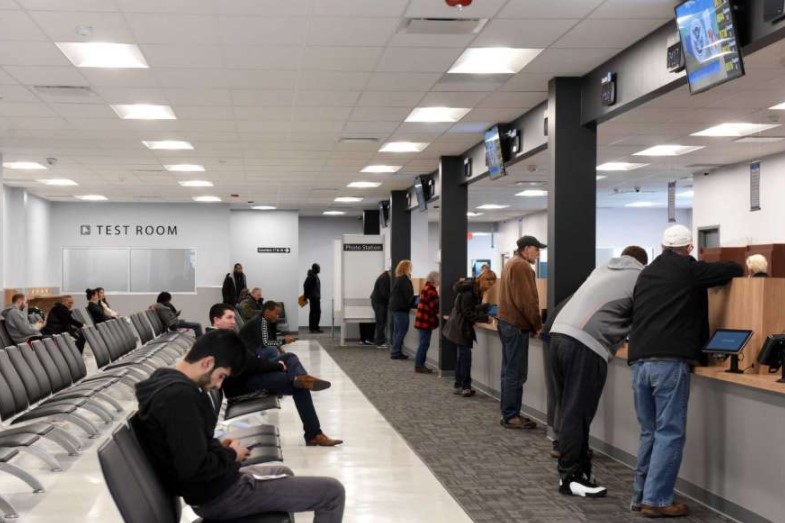Millions of Americans vacation in other states temporarily or move to other states permanently. One concern when driving in a different state is the driver’s license requirements. Do you need to get a new driver’s license for the new state you are living in? Can you live in one state and have a driver’s license in another?
You don’t have to get a driver’s license in a different state if you are only temporarily living in the other state.
You do have to get a driver’s license in a different state if you become a permanent resident of that other state. You will need to get the new state’s driver’s license within 30 days of becoming a permanent resident.
You should also comply with each state’s driving rules before using your driver’s license across state borders. When you apply for a new license, some states may require you to take the written and vision examinations. The minimum age requirement also varies between states.
Read on to learn more about living in one state and having a driver’s license in another.
Can You Live in One State and Have a Driver’s License in Another?
You don’t have to get a driver’s license in a different state if you are only temporarily living in the other state. If you permanently move to another state, you will need to get a driver’s license in that state within 30 days.
If you have a valid driver’s license, which you got from one state and met the age requirement, you can drive across state borders without any problems. This occurrence can happen when you go on a road tour or attend school in another state.
However, when you decide to reside permanently in another state, you will have to obtain a new driver’s license in that state. You also have to re-register your vehicle with the local authorized agency within 30 days of your residency.
The state is your permanent residence when you live in that state most of the time, and you own a residential house. You also pay your taxes and vote there. Moreover, you have filed a homeowner’s property tax exemption, and your kids have enrolled in that state’s schools. In some states, you are considered a resident of a state if you have resided there for six months.
If you have a driver’s license from another state, you will have to get a new license from your state of residence’s local Department of Motor Vehicles (DMV).
Nevertheless, the determination of residency varies from state to state. You have to learn about the state’s driving rules and requirements before applying for a new driver’s license too.
To learn more about having a driver’s license in multiple states, see the article on the site roadsumo.com: Can You Live in One State and Have a Driver’s License in Another?
Can You Have Two Driver’s License from Two Different States?
You cannot have two driver’s licenses from two different states. Driving requirements and rules may differ slightly for each state, but you can only have one driver’s license in the U.S. You can use this license in all states provided that your license is legal and that you obey all rules in each state that you drive in.
Again, the state where you permanently reside must issue your driver’s license. The issuance of one driver’s license is to prevent multiple driving offenses committed by one person. This method will also help organize the system in monitoring licenses through the National Driver Registry (NDR) that each state’s law enforcers have access to.
The NDR database will provide a driver’s list of offenses, those whose licenses are revoked or suspended, and other pertinent information statewide. This list will help monitor drivers who are repeat offenders so that law enforcers can deal with them according to federal laws.

Advantages of Getting Your Driver’s License from Your State of Residence
1. Easy Process of Insurance Claims
When your car is damaged or when you’re involved in an accident, you could quickly process your insurance claims as the address in your driver’s license is the same as your residence. Often, problems occur when claiming insurance because the home address is different from the address listed on the driver’s license.
2. Quick Repair of Your Vehicle
When you can easily claim your insurance coverage, you can then have your car repaired quickly. You don’t have to obtain other documents to prove the validity of your driver’s license.
3. No Problems in Using Your License as Identification
In your personal or business transactions, you can use your driver’s license as proof of your identification. This process will not be a problem because your address is correct. When your home address is different from what you have submitted for your driver’s license, problems can occur.
4. You Can Use Your License in Other States
Anyway, you can still drive in any U.S. state, wherever you obtain your driver’s license. But ensure that your driver’s license is legitimate, valid, and you’re not underage.
Also, drive defensively because whenever you commit a traffic violation, it will reflect in your NDR records no matter what state you have committed the offense.
5. You Don’t Have to Keep Changing Your Address
With the permanent address already in your license, there’s no need to change your permanent residence address. It’s not as easy as you think. Moreover, you can save your energy, time, and money by avoiding this task.
6. Provides a Sense of Belonging
When you have a driver’s license in the state where you live, it will give you a sense of belonging. You would feel reassured that you’re not a nomad with no permanent residence. This feeling may not apply to some people, but many drivers feel secure when they know their licenses are permanent.
Can You Renew Your Driver’s License in Another State?
You cannot renew your driver’s license in another state. However, you can transfer your driver’s license to the new state where you plan to establish your permanent residence.
Note that their requirements can vary slightly from state to state, but basic requirements should be the same.
These requirements can include the following:
- Current Driver’s License
- Pass a Vision Test
- Pass a Written Test
- Additional Identification
- Social Security Number
- Proof of New Residence
- Proof of Identity
For Proof of Identity, you can present your U.S. passport, other government IDs, birth certificate, and billing address.
If your driver’s license has expired, you need to apply for a new one. For drivers with a temporary driving permit and under 18, they will have to abide by the laws implemented by their state of residence.
The state may also require you to retake the driving exam or enroll in some driver’s education courses before issuing your license. You will have to comply with all the state’s requirements. There’s no other way you can evade the law.
What Happens If You Fail to Get a Driver’s License from Your New State?
If you fail to apply for a driver’s license in your new state of residence within the prescribed time, you would be violating the law. Breaking the law corresponds to sanctions, such as incarceration, hefty fines, license suspension, and vehicle impoundment.
You should not treat this violation lightly as it’s a serious offense. The gravity of the sanction may vary from state to state. However, it amounts to the same fact that you’re an unlicensed driver in that state, and they would treat you as such.
So, don’t start your new life on the wrong foot. Get your driver’s license and live lawfully in your new state of residence.
We’ve answered the question, “Can you live in one state and have a driver’s license in another?” Next, let’s look at some tips to follow when transferring your driver’s license to another state.
Tips for Transferring Your Driver’s License to Another State

1. Find Out the Requirements of the DMV in Your New State
Before processing your transfer of license, learn first what the requirements are from your state’s DMV. Complete these requirements and bring the original and photocopies of the documents. If they have online processing, you may want to do it online.
Nevertheless, you will have to personally visit the DMV office for your driving, vision, and written tests.
2. Your Driver’s License Must Be Current
You need a current and valid driver’s license before you can transfer it to your new state. In other words, you cannot transfer an expired license to your new state. If you have an expired license, you have to apply for a new one.
3. Know the Time Allowed to Transfer/Apply for a Driver’s License
Each state has designated days allowed for you to apply for a new driver’s license. After establishing your residency, you are allowed a few days to transfer or obtain a new driver’s license. You can inquire from your local DMV to know how much time you have.
Most states allow 30 days to get your license. In Texas, it’s longer – you’re given 90 days. While in California, you only have ten days to get your new driver’s license.
4. Know That Out-of-State Students Are Given Exemptions
If you’re living in another state to study, you don’t have to worry about getting a new license. As long as your driver’s license from your home state is valid and you have met the age requirement, you’re safe in the state where you study.
However, you’re not exempted when you commit violations. So, drive cautiously and defensively. Don’t abuse this privilege, as you can always be charged when you violate the driving and traffic rules in that state.
5. Not Owning a Car Is Not an Excuse
Even if you don’t own a car in your new state, if you had a driver’s license in your previous state, you’re required by the state to get a new one. This reason is not a valid excuse. Remember also to change your vehicle’s registration.
6. Be Honest with Your Answers
If you think lying about a driving violation you have committed in another state would delete your violation, think again. Records of driving and traffic offenders are stored in a centralized database, which law enforcers could quickly access online.
Lying could get you into hot waters too. Therefore, be honest when filling out your forms or when being interviewed or assessed.
If You Are a Foreigner, Can You Use Your Driver’s License in the U.S.?
You can use your driver’s license in U.S. states if you have an International Driving Permit. This permit allows you to drive for a year in any state; however, afterward, you’re required to apply for an in-state driver’s license.
Specific rules apply to different countries, so you will have to inquire from the state’s Department of Motor Vehicle (DMV). For foreigners’ application for a driver’s license, you may be required to submit the following:
- Certificate of Citizenship
- Permanent Resident Card
- Birth Certificate
- Valid and Unexpired Passport and U.S. Visa
- Certificate of Naturalization
- Unexpired Employment Certification Card
You can inquire from your local DMV to know if your state residence needs additional requirements.
Conclusion – Can You Live in One State and Have a Driver’s License in Another?
You can drive in another state if you’re not a permanent resident of another state and you’re just living there temporarily. You need to have a valid driver’s license and meet the minimum age requirement.
If you become a permanent resident of one state, you will have to obtain a valid license in that particular state within 30 days of moving. Note that the allowable time varies for each state. So, check with the local DMV in your state of residence.
You have to know the driving rules and requirements in the state where you plan to drive. Remember that there can be slight differences in the driving laws for each state.



